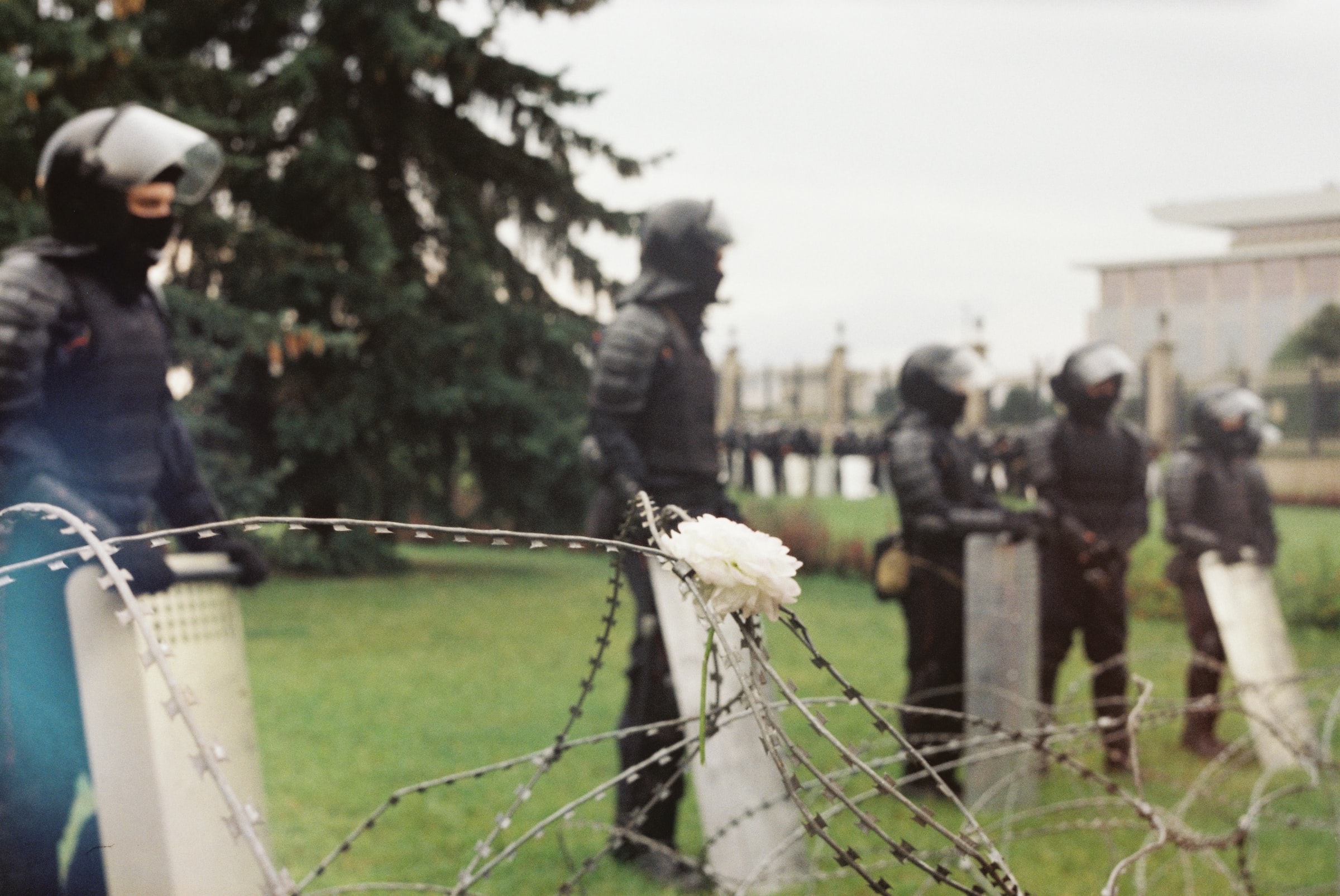The Significance of Civil Societies Across Central- and Eastern Europe
The region of Central- and Eastern Europe shares a common Soviet past. However, since the fall of communism, each of the countries has taken different paths with regards to democracy, authoritarianism and civil society engagement. In this article I will explore more in depth the common Soviet past, the rise of populism and authoritarianism, along with future prospects for the different civil societies across this particular region.
Civil society as a concept has been largely debated and defined in a whole range of different ways. For instance, as defined by the Swedish government, civil society refers to a domain separate from the state, the market and the individual household. A domain in which individuals in collective action come together in order to work around interests they have in common. Following this logic civil society includes networks, non-profit organisations and registered faith communities. Another definition offered by online dictionaries such as Britannica, is very similar to the definition given by the Swedish Government. Civil society is here defined as a dense network of groups, communities, networks, and ties that stand between the individual and the modern state. This definition also mentions the link between civil society and contemporary stands of liberal and democratic theorising. Apart from its descriptive properties, the notion of civil society also carries with it a whole range of both ethical and political aspirations and implications. It can also be noted that a large portion of advocates of civil society often see it as a crucial element for a fully functioning democracy. The distinct definitions of the concept of civil society brings to light the issue of the possible implications and understanding of the concept and notion itself. One example is the question of what organisations or groups should be included, and whether these groups have to be tied to the concept of liberalism and democracy in order to be classified as being part of social society.
Civil Society and Democracy
If we follow the conceptual basis of the concept of civil society, it also becomes clear that in order for this sphere to be separate from the state, rules need to be in place in order to assure people to gather freely. Hence, for a vibrant and free civil society, what is needed is democracy. This will insure and provide the citizens with rights without further restrictions, and allow them to form ties that will stand between the individual and the modern state.
The state of democracy over the world varies significantly. Autocratization usually follows a similar pattern regardless of context. The governments in power first launch their attack on media and civil society, divide societies by disrespecting any opponents voicing their concern, they also spread false information and last but not least they undermine elections. An overarching trend captured by the Varieties of Democracy Institute (v-dem) shows that in North America, Western and Eastern Europe, no country has advanced in democracy over the past 10 years. At the same time, democracy in states such as Hungary, Poland, Serbia, Slovenia and the United States of America has significantly declined. Particularly the autocratization in Eastern Europe seems to be worrisome. States such as Hungary, Poland and Serbia have continued to decline democratically, with continued assaults on the judiciary and with restrictive measures taken against both media and civil society. Since the steepest decline over the past 10 years took place in Poland and Hungary, my focus will therefore lie on discussing the topic of civil society in relation to the region of Central and Eastern Europe.
Source: Varieties of Democracy Institute (V-dem). Autocratization Turns Viral: Democracy Report 2021.
A Common Soviet Past
Some reasons behind the low levels of organisational membership, which followed in the region of Central- and Eastern Europe after the fall of the Soviet Union, are presented by Marc Morje Howard. He identifies three causal factors: 1) the previous experiences that people have with organisations, especially the legacy of mistrust towards formal organisations due to forced participation in communist participation, 2) the persistence of informal private networks, which are both a substitute for, or alternative to, formal and public organisations, and last but not least 3) the disappointment with the new democratic and capitalist systems of today, leading many citizens across the CEE region to avoid the public sphere altogether.
Contemporary Challenges
However, many years have passed since the fall of the Berlin wall and the fall of the Soviet Union. So to further understand the depth and complexity of the civil societies across the CEE region, it is crucial also to look at the struggles of each country separately. But many trends such as the rise of right-wing populism and a relatively low level of civil engagement with regards to the membership and organisation structure within the field of civil society across the region serve as a way to find similarities across the different contexts. One current obstacle highlighted by scholars such as Jacobsson & Korolczuk, are the ways in which civil society is measured. They point to the need for more individual-based models to uncover the ways in which civil society in this particular region is structured in a different manner. Hence, the need to look beyond non-governmental organisations, as informal types of activism require less resources and the establishment of formal organisations. Worth mentioning is also the fact that urgent local issues have been shown to mobilise a greater number of citizens than national reforms.
Yet another issue is connected to the conceptualisation of civil society itself but also to the rise of right-wing populism in the region. Seen through the lens of the Polish context, activism of conservative religious groups and organisations is rarely seen as civil society movements. The Catholic Church itself plays an important role, with 87% of the population being Roman Catholic. In Poland, these groups account for roughly 75% of all people who belong to Polish civil society organisations. Such groups are also being made invisible in the media and depicted as representing values that are contrary to the norms that civil society actors should promote. This brings out an important aspect of what is actually to be considered to be part of civil society, and most of all: should civil society include groups and organisations of a wider variety?
Source: Varieties of Democracy Institute (V-dem). Core Civil Society Index across the world for the year 2020. 0 is the lowest score and 1 shows the highest level of a robust civil society.
The Link Between Civil Society, Populism and Authoritarianism
Civil society, or rather the conservative portion of it, can also serve as a way for populist leaders to rally people around their cause. In cases such as Poland, which we have already pointed out as the number one country with regards to democratic backsliding, the ruling party (Law and Justice) used a combination of public protest campaigns and construction of civil society organisations to create networks of support from the public in the light of future electoral campaigns. The same party also receives support from conservative social networks organised by actors such as the Catholic Church. Certain elements within the Catholic Church see the emancipation of women, reproductive rights and rights for LGBTQ+ community as a threat, a reactionary counter narrative around the notion of the ”ideology of gender”. This notion in itself is presented as a Western conspiracy to undermine traditional norms, along with Polish identity. In Hungary on the other hand, civil society involvement is related to the nationally conservative FiDeSz party. Protest campaign lasting for over a month took place in public spaces around the Parliament, in September 2006 when a recording of the then Prime Minister Gyurcsany was released to the public. In this recording Gyurcsany admitted to having lied about the actual state of the economy in the country. The protestors fought with the police, attempted to take over studios of Hungarian Television, there were also protests across a number of smaller Hungarian cities. In both the cases of Hungary and Poland, the populist right’s electoral victory gained a broadly-based organisational support in civil society during the time in which both of the now ruling parties were in opposition.
In other words, more authoritarian regimes across the region, authorities make use of different methods in order to control civil society. Civil society organisations are then divided into those that are socially relevant and operating in useful domains, other organisations are deemed as ”foreign agents” and restricted by the use of restrictive legislation and are subjected to active persecution. A clear example of such an authoritarian regime is Russia, where the ”foreign agent” law can be used as a tool for the authorities to dismantle disloyal media, along with other critics who have some, if any, connection to a foreign government. As of October 2021, the Russian ”foreign agent” law also covers critics of military and security.
Other forms of control related to the CSOs are so called GONGOs (government organised non governmental organisations). Such GONGOs function under state patronage and provide a managed space for civil society engagement with the state, while operating in fields less directed to the type of socio-political order, for instance within the field of basic social services, charity and socio-economic research.
Contemporary Struggles and Future Prospects
As mentioned earlier, there are certain aspects which make it difficult for scholars in general to measure the strength of civil society at large. Not least in the case of Central- and Eastern Europe, where historically the organisational structure and membership within civil society engagement has not been on a high level in comparison with for instance Western Europe. However, it is crucial to understand the many different forms of engagement in which civil society across the CEE region functions. Such engagement might be more sporadic and harder to trace perhaps, but it does not mean we should disregard it altogether.
With regards to push backs from civil society, perhaps the most seen and noted form of activism is that of protests. People loudly voice their concerns about issues they deem as important to them. There are many examples to draw from here, which also point to the fact that people do in fact organise themselves when need be. One such example was the rally by thousands of people in Hungary when the George Soros-founded Central European University was shut down by the government. Another even more striking example of popular dissent were the protests after the elections in Belarus in 2020. Even though Lukashenko, who has been in power since 1994, continues to rule the country with an iron fist, he was met with a stark opposition. Merely a week after the vote a crowd of over 200,000 people gathered in the centre of the capital Minsk and urged the president to step down. These demonstrations continued for months and led to an even harsher crackdown on dissent voiced by concerned citizens. In Poland on the other hand, tens of thousands of people demonstrated in Warsaw after the death of a 30-year old woman who died 22 weeks into her pregnancy, during which she had complications. The family’s lawyer argued that tighter restrictions with regards to the near total-abortion ban, led to the doctors waiting too long to intervene. The Polish government however, said the woman’s death was due to a medical error and that it was not related to the new abortion law.
As can be noted, there are plenty of protests happening across the region. People are going out in the streets in order to show their governments their discontent over certain questions or events taking place in the country. The troubling part is not necessarily a lack of civil society engagement (at least in a Western sense), regarding a low level of organisational membership. The main struggle at least in countries such as Hungary, Belarus and Russia are more so the laws regarding the freedom of civil societies. Authoritarian and populist regimes seek to control and manipulate the space reserved for a free and fair civil society palette. If this space is restricted and controlled by the regime, the civil society as such, is no longer free and it is also harder to determine if civil society organisations are in fact civil society organisations and not just simple GONGOs. That is why the space for civil society profits from a democratic environment in which civil society organisations and groups can assemble without restrictions. When shrinking the democratic space, this creates obstacles for how people organise themselves within civil society groups. In conclusion, democracy, authoritarianism and civil society are all interlinked. Democracy can not function without a vibrant civil society, an autocracy on the other hand will do excellently without it.

Magdalena Kamont
Master student of the "International Administration and Global Governance" programme at the University of Gothenburg. Currently writing her master thesis on democratic decline in Poland. Former intern at Sida.





